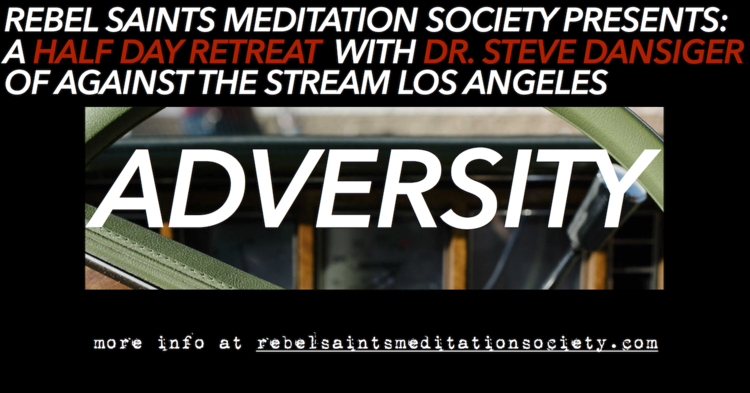Mindfulness, EMDR therapy, and Telehealth: Lessons from the MET(T)A Protocol (Part One)
Welcome to my new blog series specific to the evolving pandemic and the as of yet unknown comet tail that follows.
My first thought is to thank all of my fellow mindfulness practitioners and teachers who are sharing their knowledge and practice online, as well as all those in the EMDR community who are rising to the occasion and sharing their wisdom in order to help therapists and clients deal with this unprecedented situation.
In my studies in the University of Pennsylvania Master of Health Care Innovation program, I am in the thick of the study of Behavioral Economics and about to start a lab class where I can work on my own innovations in collaboration with incredible colleagues from across the healthcare spectrum. We are learning about and brainstorming on the subject of Choice Architecture. This is where we help people to make healthier choices through the use of default choices, opt in versus opt out, loss aversion, and several other theories, principles and actions. The Choice Architect works on designing and implementing these mechanisms.
At this time we are at the mercy of an interim Lead Choice Architect: the COVID-19 pandemic. Mental health practitioners have been thrust headlong into Telehealth, a territory where some may have already begun their journey. Others have not. Regardless, for now, it is the new normal.
EMDR therapy (and a number of other trauma therapy modalities) have been amongst the most reticent to consider telehealth, and with very understandable arguments. Working directly on traumatic memories with a client who is not in the same room as you, from a safety perspective as well as related to the more complex and nuanced realities of the relational element of therapy, is a daunting prospect for many.
In full self-disclosure, I am actually one of those therapists who has long had the luxury of delaying the reprocessing phases of EMDR therapy while using telehealth. That was up until the last couple of weeks. The Interim Lead Choice Architect has fast tracked my/our journey.
That being said, I realized over the last number of days of transition to shelter-at-home that I have a number of resources to share.
I have a long history of utilizing technology to run my business, to provide coaching, and to provide therapy. I have had the opportunity to deeply investigate the role of mindfulness (something that can be delivered quite readily over telehealth) in EMDR therapy, particularly with my colleague and coauthor Dr. Jamie Marich. I have a long standing experience providing mindfulness practice to others over distance learning platforms. I have been an online learner and instructor myself since 2005, and a non-traditional learner and instructor since 1988.
For the last three years I have been the Head of HealthCare Innovation and Partnerships for DropLabs, where we have developed technology that is already being researched and implemented toward a number of health and wellness applications, including the delivery of EMDR therapy over telehealth.
Most importantly though in relation to this blog, over the last five years my team has developed and implemented the MET(T)A Protocol (Mindfulness and EMDR Treatment Template for Agencies). In approaching EMDR therapy as a complete psychotherapy, where we apply mindfulness, the 8 phase protocol and the AIP model to systems like addiction treatment centers, mental health agencies, hospitals, and wellness centers, we have been able to treat trauma more comprehensively. I believe that these same systems and the lessons learned so far will help us overcome some of what we consider to be the down sides to the remote application of EMDR therapy.
I look forward to sharing with you in this blog, in workshops and elsewhere that EMDR therapy using telehealth becomes easier to accomplish when mindfulness is in place and Buddhist psychology provides a foundation; when Janet’s three stage model of trauma treatment is honored; when the 8 phase Standard Protocol is our basic structure for practice of EMDR; when the Adaptive Information Processing model provides the guideposts; when cases are conceptualized through these models, principles and practices; and when modifications are made for telehealth primarily in the realm of safety, resource building, stabilization, preparation, choice of bilateral stimulation, and case conceptualization.
With all these in place the choice of platform and other technology becomes more of a simple logistical shift than an item of hyperfocus, or as a reason to panic and believe we need to change everything we have learned up until now. Modifications and innovation have already been in progress, and others will be made manifest. However, we do not have to reinvent the proverbial wheel.
Most of all, I look forward to our continued collaboration to find ways to ease suffering in this world. We all share the suffering of the human condition - these days, that is much more evident. And if anyone didn’t know for sure that our treatments need to move from trauma informed to trauma focused, I suggest to you - we know now.
Those of us in the mental health and wellness professions are in this for the long haul. We can make this transition safely and effectively. And we can do it right now, working together.
Stay safe everyone.
- Dr. Steve






















